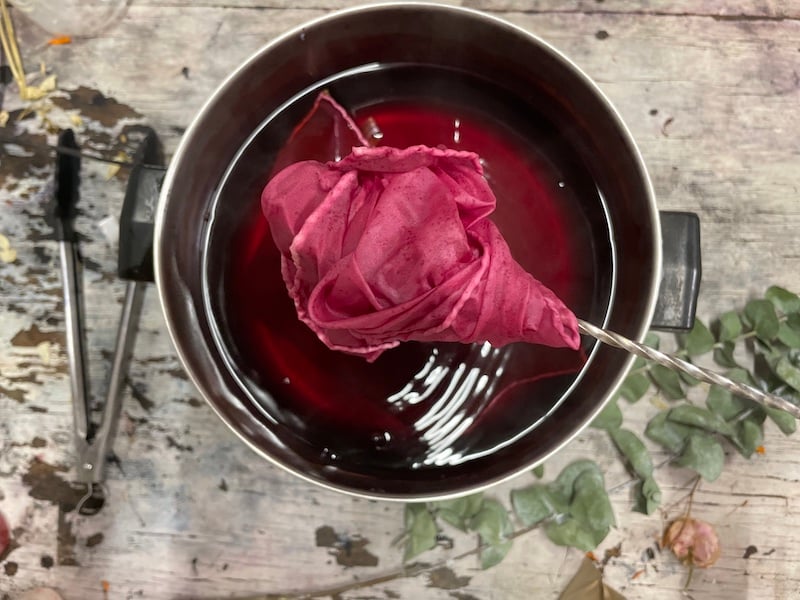
We get asked A LOT about which are the most durable natural dyes in our shop. By durable, we mean dyes that excel in both light and washfastness. But as we always say to people when they ask us to point them in that direction, there’s lots of questions we have for YOU around your lifestyle and wash practices and natural dyes.
For instance, do you use a harsh detergent? Do you wash your dyed clothing daily? Do you hang dry or put on high heat in the dryer? Is it a silk blouse or a cotton napkin? How often do you use the garment? There are lots of variables to take into consideration before putting a dye into a “better-than” category.
It’s also important to understand that protein fibers such as wool and alpaca take natural dyes beautifully and usually deliver very good light and washfastness results. Cotton is one of the trickier fibers to dye and we’ve seen the best results with a tannin pre0treatment and alum.
That said, these 8 natural dyes are the workhorses of natural color.

Madder (Rubia tinctorum) is one of the oldest and most frequently used traditional dyestuffs known to man. It has extensive history in the Middle East, Turkey, India and Iran and madder dyed artifacts were found dating from approximately 2000BC in Thebes. Madder is still being used for dyeing knotted and woven carpets in Turkey, Iran, Iraq for wool and silks, and extensively in India and Pakistan for natural dyeing on cotton. The secret for Turkey red, a deep rich red color, was guarded for centuries throughout Central Asia. In addition, it involved more than twenty steps to create this prized shade.
Our madder extract will produce pale pink and peach shades all the way through a deep, wine-colored red. Madder extract dyes to its deepest colors with an alum mordant and the addition of calcium carbonate (chalk). If you add a mild acid to your dyebath, such as Cream of Tartar, you will create a soft orange shade.

Pomegranate extract (Punica granatum), is known as anaar in India and granado in Spain. It grows wild in India, Italy, North Africa and China. The pomegranate also serves as a symbol in many cultures. It is a common motif in Christianity, the fruit of choice on the Jewish holiday, Rosh Hashanah, and a recurring token in Greek and Roman mythology. It continues to serve a symbolic purpose in Greek culture, showing up in weddings, funerals, new home purchases, and the new year, serving as a symbol for abundance, fertility, and good luck. Some use pomegranate extract as both a tannin-rich mordant and as a dye. Pomegranate is an aromatic dye that yields a matte green-yellow color. It is an amazing workhorse when combined with madder to create rich orange shades, or when overdyed with iron to create sage green to olive.
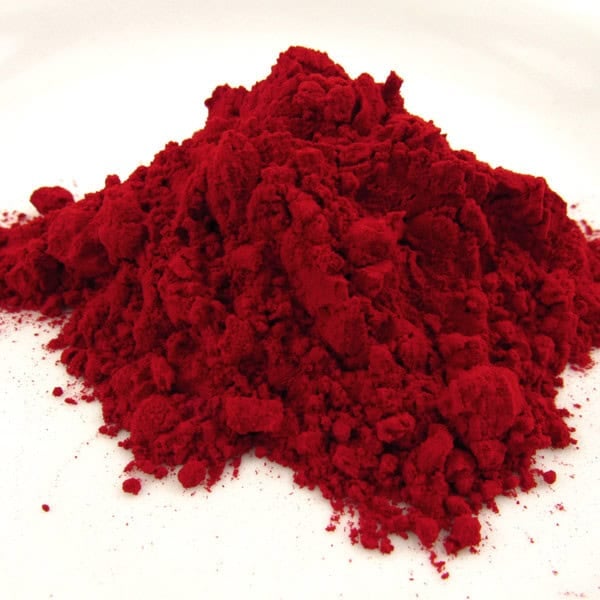
Cochineal (Dactylopius coccus) is a scale insect that invades the nopal cactus and is about the size of a grain of rice with a silvery purple hue. The best cochineal is dark and full of carminic acid. We obtain only the finest grade cochineal on the market. You will also need a small amount of Cream of Tartar for the extraction process.
Cochineal is one of the only natural red colorants that the FDA approves for use in food and cosmetics. It comes in a variety of preparations: in raw or whole insect form and in a finely processed powder or liquid extract. Textile dyers often purchase the insects as they are less expensive than the extracts. However, the extracts can be extremely strong, with up to 4 times the amount of carminic acid as the insects.
Carminic acid is the bright red color of cochineal. Manufacturers use it in cosmetics or as a food color and it is favored for its beautiful brilliant red shade. Carmine has been used as a food color since the 1960s and it’s only recently that the FDA ruled that carminic acid must be disclosed as a food color ingredient with an allergen advisorydue to increasing food sensitivities and allergies.
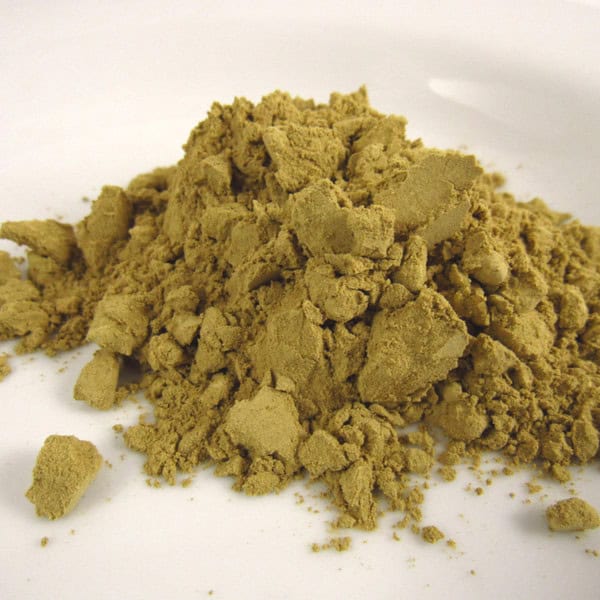
Weld (Reseda luteola) is the most lightfast of the yellow dyes. Ancient tapestry weavers in Central Asia, Turkey and Europe used the dye. Weld is the brightest and clearest yellow flower dye. In combination with iron, weld creates a rich chartreuse or, when overdyed with indigo, yields a clear lime green. We carry a very fine grade of weld extract that really packs a punch. Adding a pinch of soda ash and calcium carbonate to weld while you are dissolving it deepens the shade and the color yield from the dyestuff. For more detailed instructions, please visit our page on natural dye extracts.
Did you know you could combine weld with logwood extract to make green? See our blog post with recipe ideas for details!
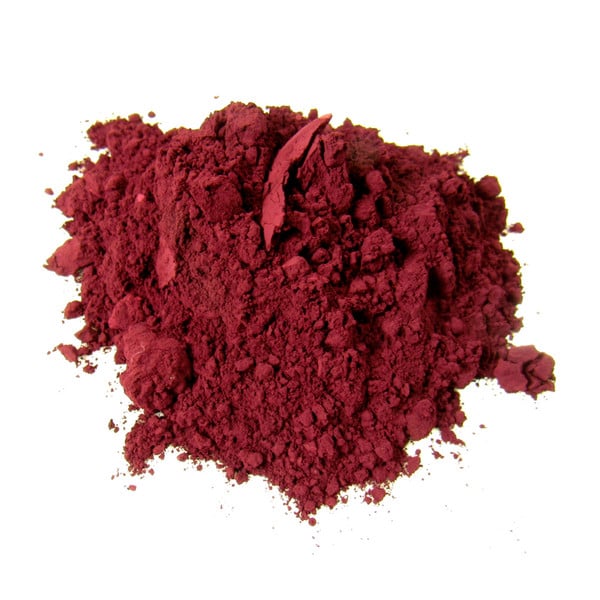
Lac (Laccifer lacca) extract comes from a scale insect known from antiquity throughout India, Southeast Asia, Nepal and China. The deep red colorant is extracted from a hard resinous crude shellac before it can be successfully used as a dye. The resin is used for lacquer and in addition as a protective covering for wood. The red colorant is collected in a thick paste form, washed and purified into an extract. Lac dye was used to color silk and dye leather and was mentioned as early as 250 AD.
Lac extract is an affordable alternative to obtain pinks, purples and burgundy reds on protein fibers using an alum mordant. However, you will need a small amount of citric acid to use with lac to help precipitate trace amounts of resin residue. 50g of lac extract will dye approximately 500g of fiber (1.1 pounds) to a dark red shade. For more information on how to use lac, please visit our page on natural dye extracts.
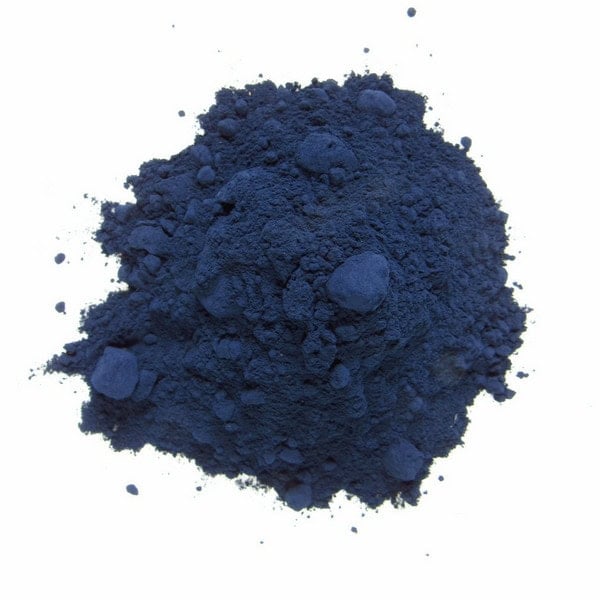
Organic indigo is a powder from the leaves of the indigo plant called Indigofera tinctoria. It is one of the oldest dyes known to humankind. Its colorant is present in other plants including woad (Isatis tinctoria) and Japanese indigo (Persicaria tinctoria), a buckwheat, all which yield different strengths of indigio. Additionally, it is present in Strobilanthes cusia, a distant cousin to the ornamental Persian Shield that you can buy at Home Depot.
Indigo was used to dye shrouds for Egyptian burials, uniforms for Napoleon’s Army and has also been used to dye prestige cloth for African chiefs and denim for blue jeans. The color was synthesized around 1880 by Johann Friedrich Wilhelm Adolf von Baeyer. Shortly after, the world indigo market collapsed as manufacturers switched to the new miracle synthetic dye. Soon after, cultivation acreage plummeted and within 20 years, only a fraction of the indigo used worldwide was from natural sources.
Our organic indigo extract is Global Organic Textile Standard (GOTS) certified. It is finely powdered. It yields a very rich and dark blue. Our indigo is 45-48% indigotin, which is 2 to 3 times stronger than other indigo on the market. Therefore you will produce deep colors with fewer dips. In addition, the indigo is very pure and potent. Only small producers grow and harvest this indigo. Each purchase of this indigo helps support small scale agriculture.

Gallo tannin extract (sometimes refered to simply as tannin) comes from gall nuts, which contain approximately 50-60% tannin and has a lovely tea-like aroma. The dye is very light, imparting a subtle beige color. Its power comes when it is combined with iron to create silver, gray and black in combination with other dyes. In addition, gallo tannin and ground oak galls are the dyer’s secret weapon for increasing lightfastness. A pretreatment of gallo tannin and then an alum mordant will boost lightfastness on cellulose fibers.
250g of tannin will mordant approximately 5000g (11 lbs) of goods when used at 5% of the weight of fiber (WOF). For more detailed instructions, please see our page on natural dye extracts.

Walnut Hull Powder from black walnut (Juglans nigra) is a common source of brown dye throughout North America. The fleshy hulls are full of tannin, juglone and other pigments and are the primary source of the dye. Walnut hulls were used to dye hair, make inks and clothing and are also used in herbal medicine.
The rich brown color develops with oxygen, so it is necessary to simmer the walnut powder for about two hours with an overnight cool down before adding the fiber. 50g of walnut hull powder will dye approximately 50-250g (2-9 ounces) of fiber to a dark brown shade with an exhaust bath that can be used for multiple lighter shades. For more detailed instructions, please visit our page on how to use walnut powder.
